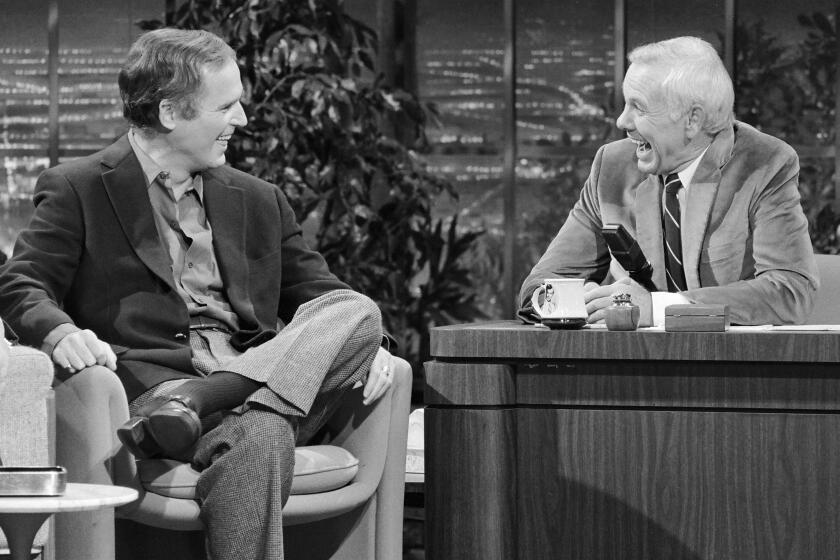Final jobs report before election shows promising wage growth
The last monthly jobs report before Tuesday’s presidential election offered some encouraging news for workers: Job growth remains steady and pay is rising at a faster rate.
Employers in October added 161,000 jobs, a little less than analysts’ average forecast but still a solid pace consistent with a healthy labor market. That’s more than enough to absorb new entrants to the workforce and keep the jobless rate from rising.
The unemployment rate dipped back down to 4.9% last month, from 5% in September, but that was mostly because the size of the labor force, a sometimes volatile number in government surveys, shrank in October. The jobless rate has ranged from 4.7% to 5% this year, but the figure doesn’t include people who have given up looking for jobs and others not actively seeking work.
While the largely expected employment statistics are unlikely to sway voters, Friday’s report adds to the body of evidence that the long and relatively slow recovery is now generating more meaningful income gains for ordinary workers.
To that extent, it gives a little boost to Hillary Clinton, the Democratic candidate whose fortunes are linked to President Obama and his policies.
The acceleration in wages also will be seen by the Federal Reserve as another indication of a strengthening labor market and rising inflation — conditions that Fed officials cited this week in signaling they may raise interest rates next month.
“They’re looking not just for good labor market conditions, they’re also wanting to be confident that they’ll reach the 2% inflation target,” said Carl R. Tannenbaum, chief economist at Northern Trust in Chicago. Inflation has been running below that rate in recent years, although it’s showing signs of picking up. “When wages are going up, you’re much more likely to have normal levels of inflation,” he said.
At the same time, Paul Ashworth, chief U.S. economist at Capital Economics, cautioned that an interest rate hike wasn’t a done deal, citing the outcome of the upcoming election and how markets and businesses react. Although financial markets have been stable during most of this campaign season, recent days have seen increases in volatility measures, and many analysts think a long-shot win by Donald Trump would send shock waves through markets.
“That’s all dependent on the election not blowing up in the Fed’s face,” Ashworth said of a possible Fed rate move in December.
On Friday, stock markets rose after the jobs report but could not hold the gains, with the Dow Jones industrial average falling 0.24% and the broader S&P 500 index down 0.17%, extending its losing streak to nine sessions, the longest since 1980.
The job growth in October came after upwardly revised gains of 191,000 in September and 176,000 in August. Through last month, the economy this year has added 181,000 jobs a month on average, down from 229,000 in 2015. A slowdown was expected, given that this is the seventh year of continuous job expansion and that employers are having more difficulty finding workers as the unemployment rate has dropped to low levels.
The tighter labor market is now clearly helping push up wages, which have been gradually picking up in recent months. Average hourly earnings of private sector workers rose 10 cents from September, to $25.92 in October. That was up 2.8% from a year ago — the fastest annual pace since June 2009, when the Great Recession officially ended.
Given that the annual inflation rate was 1.5%, that means workers are getting real wage gains — which means more money in their pockets and a likely boost in consumer spending, the biggest driver of U.S. economic growth.
The Labor Department’s wage data dovetail with a Census Bureau report in September that showed median household income rising a sharp 5.2% in 2015 from the year before, evidence that the economic recovery is finally providing relief to a broader population of Americans.
“I think in a lot of ways the economy is moderately healthy,” said Thea Lee, an economist and deputy chief of staff at the AFL-CIO. “It’s certainly not gangbusters and we certainly have a lot of challenges with inequality and with wage stagnation, [but] you’re just starting to see some good outcomes there.”
Lee added: “Clinton would argue that we need to stay the course and double down and do more of what’s working. Donald Trump says, ‘Drop everything we’re doing now, it’s just been terrible, and completely do the opposite.’ I don’t think that’s borne out by the economic statistics.”
Aparna Mathur, an economist at the conservative American Enterprise Institute, said “I do agree that today’s numbers are very decent, but the Republican idea that everything is not great is also partly true.”
Mathur noted, for example, that the 6 million part-time workers who want full-time jobs and the 2 million long-term unemployed who are still out of work are well above levels during economic expansions. “At the same time, I don’t think it’s true that the labor market is declining and it’s a really dire picture,” she said. “We’re somewhere in the middle.”
It’s unclear what the potential is for wage growth; in the economic growth period before the Great Recession struck in 2007, average hourly wages rose at an annual rate of as much as 3.6%. “The last couple of months have seen some very strong increases,” said economist Tannenbaum, “so what that means is you’ve got momentum.”
By industry, wage growth last month was broad-based, as was the hiring. Job growth was concentrated in the service-producing part of the economy, with education and healthcare, professional and business services and financial firms adding the bulk of the new jobs. Government, notably federal agencies, and the construction sector also added to payrolls.
However, manufacturing shed workers for the third month in a row, and the mining industry has now lost jobs in every month for the past two years, thanks to the weakness in the energy sector.
Retail employment was flat last month, even as companies have announced plans for sizable holiday hiring. That may have been partly due to the weather, including Hurricane Matthew, which hit the Southeast.
Retailers on the whole are expected to add between 640,000 and 690,000 seasonal workers in November and December, similar to last year, said Jack Kleinhenz, chief economist at the National Retail Federation. With the labor market tightening, he said, some retail employers are offering higher wages, as well as bigger employee discounts on merchandise.
Holiday sales, which make up about one-fifth of retailers’ annual revenue, are projected to grow 3.6% this year, up from 3.2% during the 2015 holiday shopping period. “It’s a healthy and solid number,” Kleinhenz said.
ALSO
Wells Fargo says the SEC is also investigating its accounts scandal
Fed’s antitrust suit against AT&T’s DirecTV is odd, legal experts say
Clinton’s immigration plan could help economy more than Trump’s, most economists say
UPDATES:
1:20 p.m.: This article was updated with market closing figures.
11:15 a.m.: This article was updated throughout with additional reaction and analysis.
6:15 a.m.: This article has been updated with staff reporting.
This article was originally published at 5:30 a.m.
More to Read
Inside the business of entertainment
The Wide Shot brings you news, analysis and insights on everything from streaming wars to production — and what it all means for the future.
You may occasionally receive promotional content from the Los Angeles Times.











